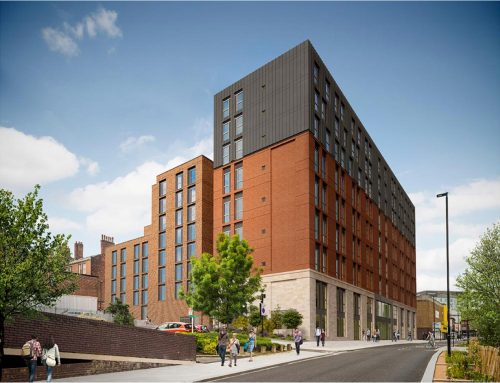Investigating carbon-budget compliant retrofit measures for the English housing stock
An ambitious target has been set
The UK has one of the most ambitious carbon reduction targets: striving for net zero greenhouse gas emissions by 2050.
To keep the global temperature rise to within 1.5 °C, in line with the Paris climate accord, drastic decarbonisation measures are needed [1]. As the world recovers from the Covid-19 pandemic, global carbon emissions have rebounded to near pre-pandemic levels [2]. Therefore, efforts are still urgently needed to keep UK carbon emissions within the pre-set carbon budgets.
A major challenge to achieving this target is decarbonising heating demand, with almost 25m homes in need of retrofit.
In a recent paper, researchers from both the University of Sheffield and University College London explored a range of retrofit interventions to the English residential stock. The impact of these interventions on embodied and operational carbon emissions is estimated from 2021 to 2050.
The resulting emissions are compared to estimated national carbon budgets, in order to ascertain, if, and with what combination of retrofit measures, the English housing stock can stay within carbon budgets. The identified scale and pace of deployment thus needed to stay within carbon budgets is likely to pose enormous practical challenges.
UK residential emissions and retrofit
Direct and indirect greenhouse gas (GHG) emissions from the residential building sector accounted for 16% of the UK’s total emissions in 2019 [3].
A recent report by the Committee on Climate Change points out that achieving the net zero emissions goal is all but impossible without decarbonizing England’s existing residential stock of almost 25 m homes [4]. Decarbonisation of the English stock can be achieved by a range of measures, applied both on the supply side and demand side. Upgrades to deliver a net zero carbon energy supply system include switching to decarbonised electricity, e.g. on and offshore wind, district heating with biomass, and repurposing the existing gas network for 100% hydrogen.
These, however, often need to be designed in conjunction with building level retrofit measures. For example, an increased renewable electricity grid mix/capacity still requires building retrofit to electrify heating, i.e. through installation of heat pumps. Whereas hydrogen, at least in the UK, is unlikely to be reliably available in the network before 2030 [5]. This would leave nearly a decade of unmitigated residential emissions.
The significant size and age of the stock means that, in addition to its importance to the decarbonisation targets, building retrofit can also provide a significant opportunity to boost economic activity by increasing employment and wages [6].
Although there are many options for achieving net zero, practically delivering this transition will pose several challenges, including identifying the stock most in need of intervention, the deployment of the right mix of intervention measures that are practical, and most cost effective, for both homeowners and the wider energy system.
Whole-life emissions and emissions budget
Many aspects of residential building retrofit have already been explored, from financing and governance requirements to the development of various scenario modelling tools to support decision making in the area.
The majority of current UK residential stock retrofit studies focus on operational impacts, largely excluding embodied impacts [7]. There is little research investigating the whole life carbon performance of building stock retrofit, which includes accounting for the embodied carbon emissions from the retrofit measures themselves [7], and it is this research gap that this study is aiming to fill.
Moreover, with the current UK housing retrofit rates too low to achieve net zero by 2050 [8], a novel research question arises: what retrofit measures need to be deployed to keep the English residential stock within carbon budgets?
Policy implications
By combining the operational carbon calculated and cradle-to-gate embodied carbon of retrofit materials and systems in this study, we have investigated the whole-life carbon performance of retrofit measures in the whole English house stock. The results are compared with carbon targets to support retrofit policy making in achieving net zero emissions without overspending the emissions budget.
At our current emissions rate, we have shown England’s homes to have produced somewhere over 2200 MtCO2e by 2050. This leads to surpassing the CCC and Tyndall carbon budgets by over 1100 MtCO2e and over 1800 MtCO2e respectively under various grid decarbonisation scenarios. We have also shown that even under large-scale residential retrofit scenarios, total emissions consistently overshoot the 2050 carbon budget, except for those aggressively deploying heat pumps and thus electrifying heating.
Given our implicit assumption that all retrofit measures have already been implemented at the start of 2021, the following policy recommendations are critical to achieve net zero by 2050 within the residential sector:
- Rapidly increased heat pump deployment, without the current planned delays until 2028. Given nearly 20 million homes in England alone are eligible for heat-pumps, installing at the pace of current targets, i.e., achieving a deployment rate of only 600 thousand heat pumps annually by 2028, will require an additional 25 years after 2028 before every home is converted.
- Carefully select materials to retrofit building envelopes to drive down the embodied carbon emissions from retrofit, whilst reducing the heating demand to maintain a comfortable indoor environment. Thus, leading to less electricity consumption during operation and lower electricity bills for heating when switched to heat pump systems.
- Current targets for offshore wind are insufficient to achieve net zero carbon by 2050 and need to be made more ambitious. Our estimates suggest deployment of over 11 thousand additional 2 MW wind turbines in the beginning of 2021 is required in tandem with the nationwide installation of heat pumps and double glazing in order to meet the Tyndall carbon budget for the English house stock.
Conclusion
Measures 1 and 2 need to be deployed across all homes, creating challenges in financing, and incentivising what can be disruptive retrofits. Thus, there is a need to increase awareness about the potential energy/carbon/cost savings, from residential retrofit, in addition to the thermal comfort benefits. Attractive financing options will need to be provided to enable all homeowners to undertake retrofits given their key role in delivering widespread decarbonisation, and these need to be made available near immediately given the pace of change we have shown is required to meet carbon budgets. Measure 3 is in some respects simpler in that it is not at the mercy of millions of individual homeowners, but the need is no less urgent and requires significant government investment and leadership.
This blog post offers a brief overview of the research and conclusions carried out by the team. If you’d like to read the full paper, you can find it published online at Science Direct.
—
Authors:
Li, H. Arbabi, D. Densley Tingley
Department of Civil & Structural Engineering, University of Sheffield, Sir Frederick Mapping Building, Sheffield, S1 3JD, United Kingdom
Bennett, T. Oreszczyn
UCL Energy Institute, University College London, 14 Upper Woburn Place, WC1H 0NN, United Kingdom
—
References:
[1] A. Morton
Countries must triple climate emission cut targets to limit global heating to 2C (2019)
https://www.theguardian.com/environment/2019/sep/23/countries-must-triple-climate-emissions-targets-to-limit-global-heating-to-2c,
Accessed 28th Dec 2020
[2] A. Jaunt
Global carbon emissions rebound to near pre-pandemic levels (2021)
https://www.reuters.com/business/cop/global-carbon-emissions-rebound-near-pre-pandemic-levels-2021-11-04/
Accessed 12 Nov 2021
[3] CCC
The sixth carbon budget methodology report (2020)
https://www.theccc.org.uk/wp-content/uploads/2020/12/The-Sixth-Carbon-Budget-Methodology-Report.pdf
[4] CCC. UK housing
Fit for the future? (2019)
https://www.theccc.org.uk/wp-content/uploads/2019/02/UK-housing-Fit-for-the-future-CCC-2019.pdf
[5] HM Government
UK hydrogen Strategy (2021)
https://assets.publishing.service.gov.uk/government/uploads/system/uploads/attachment_data/file/1011283/UK-Hydrogen-Strategy_web.pdf
Google Scholar
[6] Nieto J, Brockway P, Barrett J. Socio-macroeconomic impacts of meeting new build and retrofit UK building energy targets to 2030: a MARCO-UK modelling study. Sustainability Research Institute (SRI) Working Paper No 1212020.
[7] X. Li, D. Densley Tingley
Solid wall insulation of the Victorian house stock in England: a whole life carbon perspective Building and Environment (2021), p. 191
[8] J. Piddington, S. Nicol, H. Garrett, M. Custard
The housing stock of the United Kingdom (2020)
https://files.bregroup.com/bretrust/The-Housing-Stock-of-the-United-Kingdom_Report_BRE-Trust.pdf





